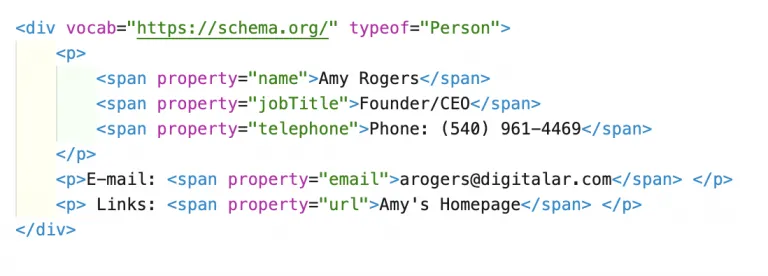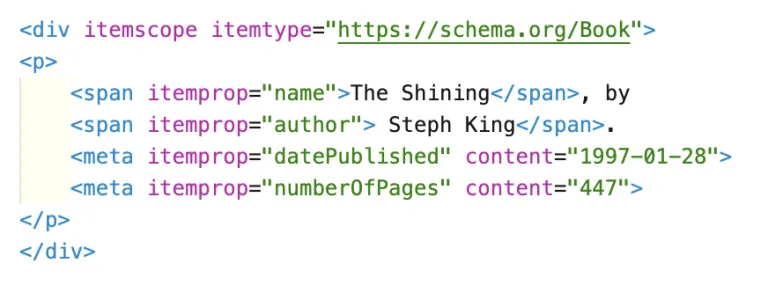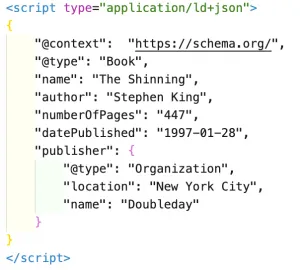- Published: September 3, 2020
- Last Updated: October 15, 2021
- Author: Lindsey Nelson
Have you ever looked up a movie rating, and at the top of the page you quickly find ratings from three different websites — say, Rotten Tomatoes, IMBd, and Common Sense Media — neatly placed at the top of the Google search results page? Do wonder how Google picks out this information?

Information that appears right on the search results page — like reviews, recipes, FAQs and images — are called rich results, and they are powered by structured data. Webmasters use structured data to organize information on their sites so that search engines can better determine the content of their sites and answer user search queries more effectively. In this article, you'll learn an overview of the three structured data formats that are compatible with the Google search engine, and we'll provide examples of what they look like.

For a basic introduction to how structured data works, why it’s needed, and what the benefits are, check out our Structured Data Guide or watch this video
TABLE OF CONTENTS
- What is structured data?
- structured vs unstructured data
- unstructured data
- Three types of structured data used by Google
- Structured Data Examples: RDFa, Microdata, and JSON-LD
- RDFa structured data markup + Example
- Microdata structured data markup + Example
- JSON-LD Structured Data Markup + Example
- Benefits of JSON-LD Schema
"Structured data is a standardized format for providing information about a page and classifying that content on the page; for example, on a recipe page, what are the ingredients, the cooking time, the temperature, the calories, and so on."
— Google Developers
Structured data makes it possible for search engines to understand content across the internet and, as a result, deliver a better user experience and make it easier for people to find things that they are looking for when they use a search engine to find information on the web.
Google is continually building a more semantic web, which means these markups are increasingly valuable in internet communication.
What do we mean when by semantic web? The Semantic Web is essentially an extension of the current web, where information is given a clearly defined meaning that both computers and people can understand. This enables computers and people to more effectively work together.
Structured data is created using a predefined schema and is organized in a clear, tabular format. Similar to a table, the data is defined by a clear structure where each line of data corresponds with a specified value.
Most of the internet is unstructured data. Data is considered unstructured when it doesn’t conform to a predefined tabular format with clear input categories.
- Social Media
- Text Files
- Email
- Images
Schema is a structured data vocabulary that works to define unstructured data (entities, actions, and relationships) like the items listed above so that search engines like Google can understand them. Schema.org serves as a sort of a library of this vocabulary and most Search structured data relies on it. Schema.org does provide helpful information about structure data implementation and other documentation, but it’s important to also consult Google’s documentation on structured data or the documentation of whichever search engine you would like to rank in.
As for examples of structured data, we'll focus on the types of structured data that are relevant to search engines.
- RDFa
- Microdata
- JSON-LD, but they have explicitly stated their preference for JSON-LD.
RDFa, microdata, and JSON-LD are all code languages that can be embedded into HTML to include metadata on a web document.
RDFa stands for Resource Descriptive Framework in Attributes. RDFa was created to bridge the gap between human-oriented HTML and machine-oriented RDF documents. It uses the RDF data model and semantic web vocabularies directly. When we say *semantic web vocabularies, we're talking about the language used to describe a set of data, including the semantic correlation between words.
RDFa structured data can be added to any HTML, XHTML, or XML-based document. RDFa helps a search engine understand the user-facing content of a page through HTML tag attributes. RDFa is commonly used in the head and body sections of an HTML page.
Here's an example of some contact information listed on a website for Amy Rogers. This is what it looks like on the user-facing side:
Amy Rogers Founder/CEOPhone: (540) 961-4469
E-mail: [email protected]
Links: Amy's Homepage
Then the backend, with RDFa will look like this:

Another way to implement schema into your HTML is through a microdata format. This format works by implementing “item scope”, “item type” and other item distinctions and then inserting the Schema.org vocabulary that correlates to the item that’s in the page’s content. For example, if you’re trying to tell a search engine that “The Shining” by Stephen King is on your web page, then you would find the schema vocabulary for “Books” and insert that into your microdata structure.
The front end: The Shining, by Stephen King.
Backend:

As previously mentioned, JSON-LD is Google's preferred format. It is the golden standard for structured data markup. You'll want to include your JSON-LD script in the header, or near the top of the page.
Compared to microdata, JSON-LD is easier to implement, because you can simply paste the markup within the HTML document, versus having to wrap the markup around HTML elements. JSON-LD will help a search engine establish facts surrounding entities (items on the web.)
JSON-LD markup will always begin with the following line:

This is to signal to the crawler that the following Javascript will contain JSON-LD formatting. What does this look like in the code vs on the front-end?

If you want to implement structured data on your site by hand (as opposed to using software), you'll want to make sure to use the JSON-LD format. If you implement it correctly, then it will likely reap fairly significant SEO benefits for your site.
- Easier to implement than other structured data models
- Fully-endorsed by Google as the preferred format
- Qualifies your website content to be featured in Rich Results
- Makes it easier for search engines to understand your website and index pages
- Enables search bots to crawl your site quicker and fully utilize crawl budget
- Ultimately, it helps Google answer search queries, so people can find the item on your site.
Want to save time on implementation and passively capture rich snippets in search results? Talk to one of our analysts about how our automated Structured Data software can help your website!
STRUCTURED DATA AND SCHEMA.ORG
What is structured data and schema.org?
Schema.org is a community founded on June 2, 2011, by Google, Microsoft, Yahoo, and Yandex with the initiative of collaboratively developing schema vocabularies for structured data markup on web pages, emails, the internet, and more. The implementation of this schema into structured data markup enables search engines to easily understand the content on websites.
UNDERSTANDING THE STRUCTURED DATA VIEW IN THE HUCKABUY DASHBOARD
How do I use the structured data page in the Huckabuy Dashboard?
In order to get full value out of our Dashboard, it’s important that you as a customer can understand the information being presented to you when you navigate to the different views available within it. Once you have installed Huckabuy SD markup on your website, you will be able to keep track of the number of structured data objects you currently have in use and export structured data reports.
GOOGLE'S RECOMMENDED AND REQUIRED DATA ATTRIBUTES
What are Google’s recommended and required data attributes?
Although Google uses Schema vocabulary, it has also created its own set of recommended and required properties. Each structured data object has a unique set of recommended and required properties, all depending on the type of content and information it is providing. Read by reading Google's recommended and required attributes documentation, or simply click on the above link.